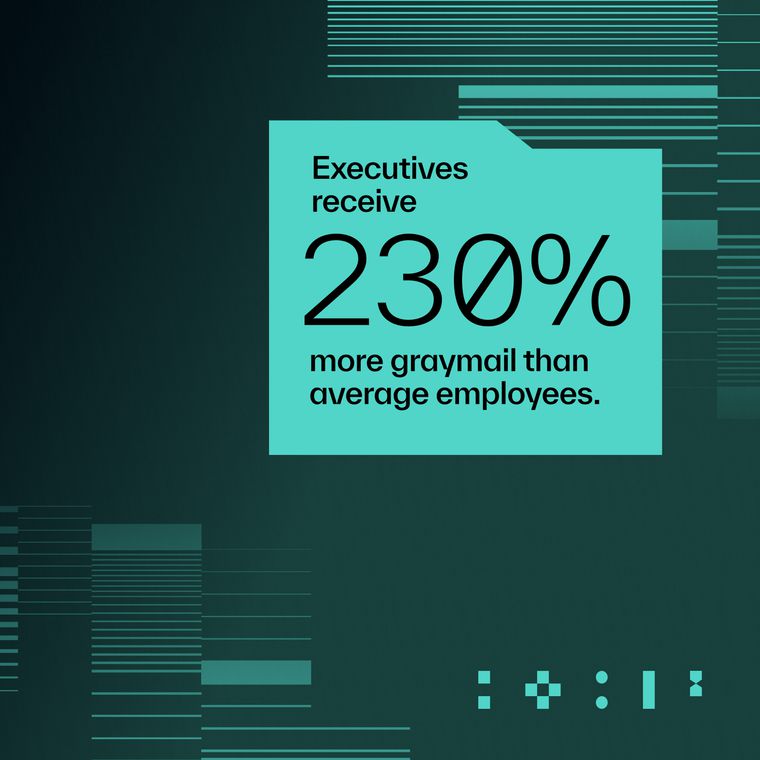How AI-Powered Email Security Transforms Enterprise Protection Strategies
Discover how AI-powered email security redefines enterprise data protection, protecting assets against evolving cyber threats and compliance challenges.
June 18, 2025
Enterprise data protection refers to the technologies, policies, and processes that keep sensitive business data secure, intact, and accessible.
The 2025 Verizon Data Breach Investigations Report underscores the urgency: credential theft and phishing remain leading breach tactics, with email used in 27% of incidents.
How Email Messages Get Compromised in Enterprise Environments
For large organizations, email remains both a critical communication channel and a high-risk vector for data exposure.
While most security programs are designed to block inbound threats like phishing, ransomware, and business email compromise (BEC), protecting outbound communications is equally important, especially in environments handling sensitive financial, legal, or customer data.
Enterprise data protection and email risk go beyond known threats. When an employee account is compromised, attackers often exploit trust and scale, exfiltrating data or initiating unauthorized transactions from within the organization.
To manage this risk, it’s essential to understand where compromise can occur across an email message:
Email Body: May include leaked data, fraudulent requests, or manipulated language designed to deceive.
Attachments: Can carry malware or expose sensitive internal documents when shared externally.
URLs: Embedded links may redirect users to attacker-controlled infrastructure, compromising credentials or systems.
Sender Identity: Can be spoofed or abused through compromised internal accounts, increasing the likelihood of trust-based exploitation.
Addressing these risks requires more than static filtering. It requires visibility into content, context, and user behavior across every message. To reduce the impact of data breaches and maintain compliance, security leaders need adaptive, behavior-aware defenses that prevent threats before they reach the inbox.
Key Aspects of Enterprise Data Protection Strategies
Effective enterprise data protection strategies address both known vulnerabilities and emerging threats. They rely on layered security measures, regular risk assessments, and robust data governance to protect critical data and sensitive information.
Components of a Robust Enterprise Data Protection Strategy
A strong enterprise data protection strategy includes the following:
Policies and procedures define how sensitive data like intellectual property is accessed and managed, reducing ambiguity and limiting risk exposure.
Risk assessments identify vulnerabilities across systems and workflows, helping teams prioritize where to act.
Preventive measures, such as data loss prevention (DLP) solutions, monitor for abnormal behavior and stop data exfiltration before it occurs.
Employee security awareness training builds awareness of targeted threats, turning users into a stronger line of defense.
Incident response planning enables fast containment and recovery, minimizing operational and reputational impact.
Governance and compliance frameworks align security practices with regulatory demands, helping avoid compliance gaps and penalties.
Together, these components create layered defenses protecting enterprise data from diverse security risks.
Risk Management and Data Classification
Effective enterprise data protection starts with knowing what you’re protecting. Risk-based classification and control help security teams focus on what matters most.
Data inventory and classification provide visibility into what data exists and how sensitive it is, forming the foundation for protection strategies.
Cataloging by sensitivity and business value reduces unnecessary access and guides how controls are applied.
Risk-based prioritization ensures security resources are focused on high-value assets most likely to be targeted.
Mapping data flows highlights vulnerable transition points where data may be exposed or mishandled.
Data minimization limits the amount of sensitive information collected and stored, reducing exposure and simplifying compliance.
These practices help organizations reduce risk at the source by understanding, organizing, and controlling data before it becomes a liability.
Ensuring Compliance with Regulations
Enterprise data protection must meet evolving regulatory requirements to avoid severe penalties.
Navigating the Regulatory Landscape
Regulations are tightening, and non-compliance now carries real business risk. Enterprise data protection strategies must account for global standards and rising customer expectations.
GDPR mandates strong controls over EU citizen data, including consent, minimization, and access rights, with fines up to 4% of global revenue.
CCPA/CPRA gives California residents more control over personal data, with active enforcement that signals increasing scrutiny.
HIPAA sets strict rules for healthcare data, and violations can incur heavy penalties.
PCI DSS governs payment data security, with non-compliance resulting in fines, higher transaction costs, or loss of processing rights.
These points make one thing clear: compliance isn’t just about checking boxes. It’s a core part of protecting data, reducing risk, and earning long-term trust.
Tools and Techniques for Compliance
Staying compliant at scale requires innovative systems, not just policies. The right tools help enforce controls, reduce risk, and simplify audits.
Governance frameworks like the AI TRiSM framework, the NIST Cybersecurity Framework 2.0, and the ISO 27001 provide a structure for aligning security controls with regulatory requirements.
Automated compliance monitoring flags policy violations in real time, reducing the need for manual oversight.
Least privilege access controls limit exposure by ensuring users only access what they need, which is critical as credential misuse remains a top breach driver.
Data encryption and masking protect sensitive information and can reduce the scope of regulatory audits.
DLP solutions detect and block unauthorized data movement before it becomes a compliance issue.
Audit and documentation systems create a clear record of compliance activity, helping organizations prepare for regulatory reviews.
Organizations using automation to support compliance report significantly lower costs, and fewer surprises when audits happen.
How to Implement Enterprise Data Protection
Protecting enterprise data starts with a clear plan. The one that connects strategy to execution and brings the right stakeholders together.
Discover and map data to understand where sensitive information lives and how it moves across systems.
Engage stakeholders across teams, IT, legal, compliance, and business, to align goals and reduce gaps in ownership.
Define clear data security policies covering classification, retention, access, and destruction to guide consistent decision-making.
Deploy layered controls that apply automatically, ensuring protections are consistent and scalable.
Establish incident response procedures with defined roles, escalation paths, and communication plans to contain breaches quickly.
Continuously test and refine with vulnerability scans, penetration tests, and regular reviews to strengthen resilience.
Security strategies work best when they’re practical. Aligning protection with business workflows helps reduce friction and avoid workarounds.
Emerging Threats and Adaptive Defenses
Cyber criminals don’t wait for misconfigurations. Instead, they exploit trusted access, move silently, and evolve faster than static defenses can respond using the latest technologies like Artificial Intelligence (AI). Some prominent examples of these cyberattacks include:
Ransomware campaigns now target high-value organizations with tailored tactics.
Advanced Persistent Threats (APTs) quietly exfiltrate data over time, often going undetected for months.
Zero-day exploits take advantage of unknown vulnerabilities, often before patches are available.
Supply chain attacks breach trusted vendors to reach downstream customers, turning third parties into entry points.
Phishing powered by malicious AI tools mimics trusted senders and bypasses MFA with alarming accuracy.
Defending against these tactics requires more than signature-based tools. Emerging technologies offer smarter, faster protection for enterprise data protection (EDP), such as:
AI-driven anomaly detection identifies subtle behavioral changes, flagging threats that look legitimate on the surface.
Automated response capabilities isolate compromised accounts and trigger containment, without waiting for manual intervention.
Zero Trust architectures verify every access request, reducing the risk of lateral movement after compromise.
Behavioral biometrics detect unauthorized access attempts by analyzing how users interact with systems.
Cloud-native security tools provide visibility and control across distributed, multi-cloud environments.
Modern threats adapt quickly, but so can defenses. By investing in intelligent, behavior-based protections, enterprises can shift from reactive response to proactive resilience.
Securing Your Organization’s Future
Enterprise data protection requires alignment across people, processes, and technology. Building a security-first culture, backed by strong policies and intelligent tools, strengthens resilience against evolving threats.
Adaptive strategies assess risk continuously and adjust in real time. When done right, they protect customer trust, support business continuity, and reduce long-term risk. The question isn’t whether an attack will happen. It’s whether your defenses are ready when it does.
Abnormal helps security teams protect what matters most. Book a demo to see how AI-driven email security can enhance your enterprise data protection strategy.
Related Posts
Get the Latest Email Security Insights
Subscribe to our newsletter to receive updates on the latest attacks and new trends in the email threat landscape.


